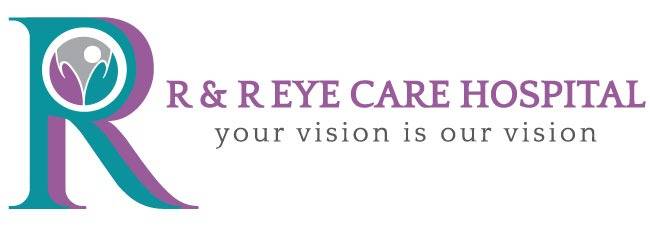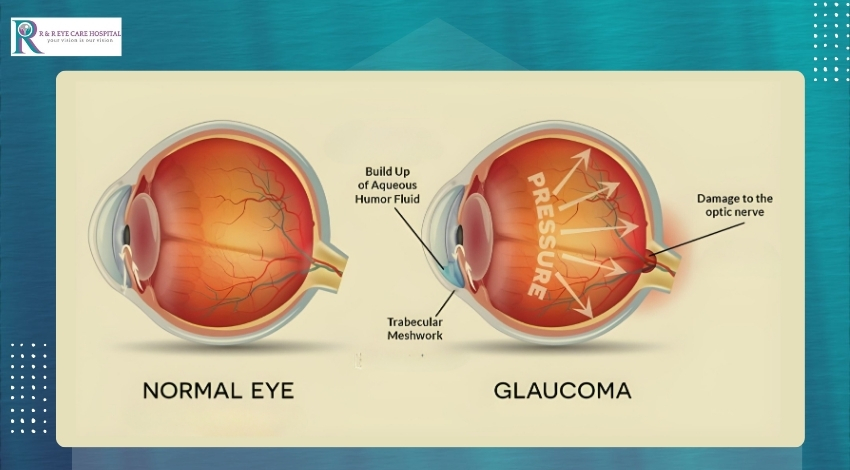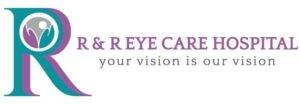Glaucoma is often called the “silent thief of sight” because it can gradually damage your vision without any noticeable symptoms in the early stages. It is one of the leading causes of blindness worldwide, affecting millions of people. However, with early detection and treatment, glaucoma can be managed effectively, preventing significant vision loss.
In this blog, we’ll explore what glaucoma is, its early signs, risk factors, and the importance of regular eye checkups in managing this condition.
What Is Glaucoma?
Glaucoma is a group of eye conditions that damage the optic nerve, which is essential for transmitting visual information from your eyes to your brain. The damage is often caused by increased pressure in the eye, known as intraocular pressure (IOP), but it can also occur with normal IOP in certain cases.
There are several types of glaucoma, the most common being:
- Open-Angle Glaucoma: The most prevalent type, where the drainage angle of the eye remains open, but fluid doesn’t flow out as it should, increasing pressure over time.
- Angle-Closure Glaucoma: Occurs when the drainage angle is blocked, leading to a sudden increase in eye pressure—this is a medical emergency.
- Normal-Tension Glaucoma: Optic nerve damage occurs even though eye pressure is within normal range, often due to poor blood flow to the nerve.
Without treatment, glaucoma can lead to permanent vision loss or blindness.
Early Signs and Symptoms of Glaucoma
In its early stages, glaucoma may not exhibit noticeable symptoms, which is why it often goes undiagnosed until significant damage has occurred. However, some early signs to watch for include:
- Gradual Loss of Peripheral Vision:
- Open-angle glaucoma often starts with the loss of peripheral (side) vision, which can go unnoticed until it progresses.
- Sudden Eye Pain and Redness:
- These symptoms are common in angle-closure glaucoma and may be accompanied by nausea, vomiting, and blurred vision.
- Halos Around Lights:
- Seeing rainbow-colored rings around lights is another potential symptom.
- Blurred Vision:
- Persistent blurry vision can be an indicator of increased eye pressure.
- Headaches:
- Frequent headaches, especially around the eyes, could be related to elevated intraocular pressure.
If you experience any of these symptoms, seek immediate medical attention to rule out glaucoma or other serious eye conditions.
Risk Factors for Glaucoma
Certain factors can increase your risk of developing glaucoma, including:
- Age:
- The risk increases significantly after the age of 40.
- Family History:
- A family history of glaucoma increases your likelihood of developing the condition.
- Ethnicity:
- People of African, Hispanic, or Asian descent are at a higher risk for certain types of glaucoma.
- High Eye Pressure:
- Elevated intraocular pressure is the most significant risk factor for glaucoma.
- Medical Conditions:
- Diabetes, high blood pressure, and heart disease can contribute to the risk.
- Thin Corneas:
- Having a thinner-than-average cornea is another risk factor.
- Eye Injury or Surgery:
- Trauma or previous eye surgeries can increase the likelihood of glaucoma.
Understanding these risk factors can help you take proactive steps to protect your vision.
Why Regular Eye Checkups Are Crucial
Since glaucoma often shows no symptoms in its early stages, regular eye exams are the best way to detect it early and prevent vision loss. Here’s why routine checkups matter:
- Early Detection:
- Comprehensive eye exams include measurements of eye pressure, optic nerve evaluation, and visual field tests to detect glaucoma before symptoms appear.
- Preventing Vision Loss:
- Once vision is lost to glaucoma, it cannot be restored. Early detection allows for treatment to preserve remaining vision.
- Monitoring Risk Factors:
- Regular checkups help monitor risk factors like high IOP and family history, enabling timely intervention.
- Customizing Treatment Plans:
- For those already diagnosed with glaucoma, regular visits ensure the treatment plan is working effectively and can be adjusted as needed.
Treatment Options for Glaucoma
While glaucoma cannot be cured, its progression can be slowed or halted with appropriate treatment. Common treatment options include:
- Eye Drops:
- Medications to lower eye pressure by reducing fluid production or improving drainage.
- Laser Therapy:
- Procedures like laser trabeculoplasty or iridotomy improve fluid drainage and reduce pressure.
- Surgery:
- In advanced cases, surgical procedures like trabeculectomy or drainage implants create new pathways for fluid to exit the eye.
Your eye specialist will determine the best treatment based on the type and severity of glaucoma.
Why Choose R & R Eye Care Hospital for Glaucoma Management?
At R & R Eye Care Hospital, we are committed to helping you preserve your vision through advanced diagnostic tools and personalized treatment plans. Here’s what makes us a trusted choice for glaucoma care:
- State-of-the-Art Technology:
- Our facility is equipped with cutting-edge technology for accurate diagnosis and effective treatment.
- Experienced Specialists:
- Our team includes highly skilled ophthalmologists with extensive experience in managing glaucoma.
- Patient-Centric Approach:
- We prioritize patient education and involvement in treatment decisions, ensuring you feel confident and informed.
Whether you’re seeking a routine checkup or specialized glaucoma care, R & R Eye Care Hospital is here to support your vision health.
Conclusion
Glaucoma is a serious eye condition that can lead to irreversible vision loss if left untreated. Understanding the early signs, risk factors, and importance of regular checkups is essential for protecting your eyesight. With early detection and the right treatment, most people with glaucoma can maintain their vision for life.
Don’t wait until symptoms appear—schedule a comprehensive eye exam at R & R Eye Care Hospital today. Your vision is precious, and we’re here to help you preserve it.




Leave A Comment